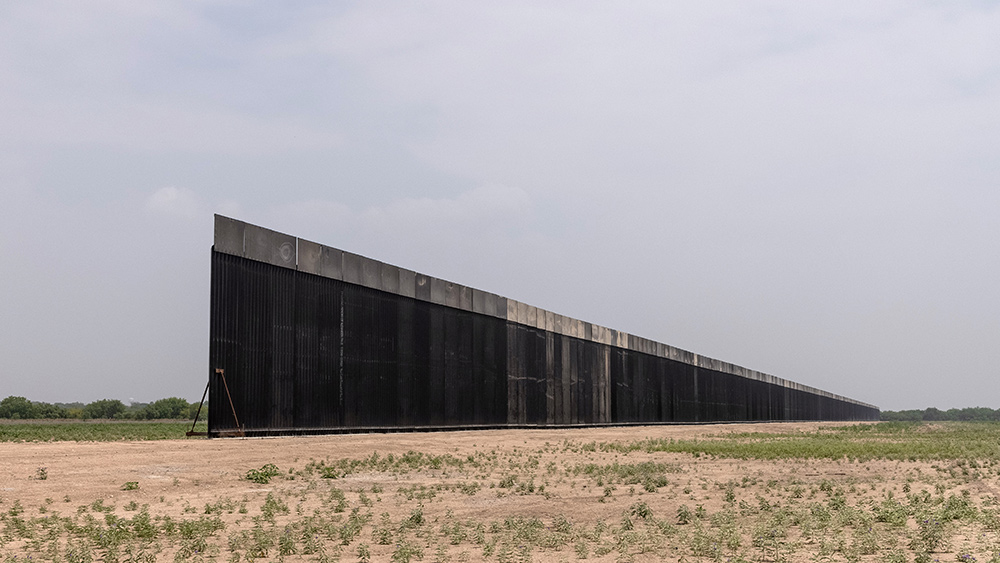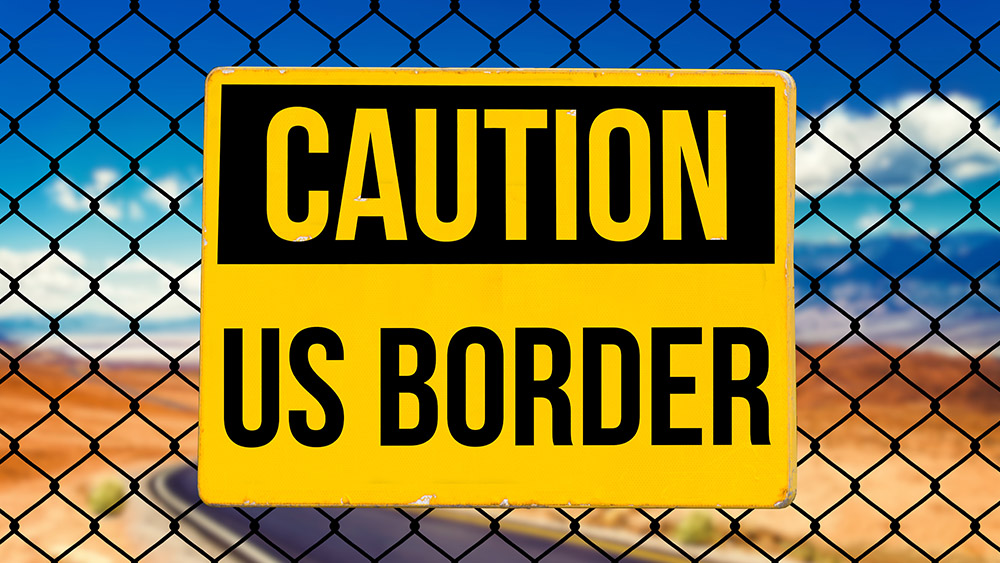 Parler
Parler Gab
Gab
- $4.5 billion allocated for Smart Wall construction across California, Arizona, New Mexico and Texas.
- 230 miles of new barriers and 400 miles of surveillance tech to enhance border security.
- Funding sourced from Trump’s "One Big Beautiful Bill" and previously frozen FY2021 appropriations.
- DHS waivers expedite construction in high-traffic areas like San Diego and El Paso.
- Smart Wall integrates steel barriers, drones, sensors and radar for comprehensive border control.
Funding and fast-tracked construction
The contracts, awarded between September 15-30, 2025, are primarily funded by Trump’s "One Big Beautiful Bill" (OBBB), supplemented by previously frozen fiscal year 2021 appropriations. Homeland Security Secretary Kristi Noem issued waivers to bypass bureaucratic delays, prioritizing construction in high-traffic zones like San Diego and El Paso—areas that experienced record surges in illegal immigration during the Biden administration. Key projects include:- San Diego Sector: $483.5 million for nine miles of new Smart Wall and 52 miles of surveillance tech.
- El Paso Sector: $850.4 million for 42 miles of primary wall and 46 miles of detection systems.
- Rio Grande Valley: $96.1 million for 17 miles of waterborne barriers near Brownsville.
Historical context: From rhetoric to reality
For decades, U.S. border security remained underfunded and politically contentious. The Trump administration’s initial wall construction faced legal and logistical hurdles, while the Biden administration halted projects entirely, leading to unprecedented migrant surges. The Smart Wall initiative reverses this trend by combining physical deterrence with AI-powered surveillance, ensuring Border Patrol agents can detect and intercept illegal crossings more efficiently. Critics argue that enhanced barriers alone won’t solve systemic immigration issues, but proponents highlight recent data: apprehensions dropped to historic lows following Trump-era policies. The Smart Wall’s layered approach—barriers, drones and sensors—aims to sustain this success.Technology overhaul: Drones, sensors and AI surveillance
Beyond steel and concrete, the Smart Wall relies on aerostats (surveillance blimps), motion detectors and AI-driven radar to monitor vast, rugged terrains. CBP’s interactive map tracks real-time construction progress, allowing taxpayers to see where funds are deployed. The integration of low-Earth orbit satellites further enhances detection capabilities, reducing reliance on manpower in remote areas.Economic and security implications
The $4.5 billion investment isn’t just about stopping illegal immigration—it’s a jobs creator. Thousands of construction workers, engineers and tech specialists are employed under these contracts, revitalizing border-state economies. Additionally, the upgraded infrastructure deters drug cartels and human traffickers, who exploit weak border enforcement.A secure border for a stronger America
The Smart Wall expansion underscores the Trump administration’s commitment to sovereignty, security and technological innovation. While debates over immigration policy persist, one fact remains clear: a controlled border is the foundation of national stability. With construction underway, the U.S. moves closer to a system where lawful entry is facilitated, illegal crossings are thwarted and American communities are protected. A fortified border isn’t just a wall—it’s a shield for America’s future. Sources for this article include: YourNews.com CBP.gov KCRA.comDon Lemon urges minority communities to arm themselves amid immigration crackdown
By Belle Carter // Share
Hamas refuses to give up arms and Gaza control, threatening fragile truce
By Zoey Sky // Share
Big Tech’s censorship surge: From manipulating opinions to silencing dissent
By Gregory Van Dyke // Share
Toyota recalls thousands of vehicles over defective seat rails and display malfunctions
By Kevin Hughes // Share
Governments continue to obscure COVID-19 vaccine data amid rising concerns over excess deaths
By patricklewis // Share
Tech giant Microsoft backs EXTINCTION with its support of carbon capture programs
By ramontomeydw // Share
Germany to resume arms exports to Israel despite repeated ceasefire violations
By isabelle // Share










